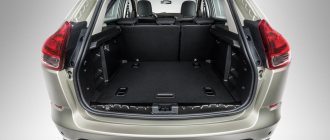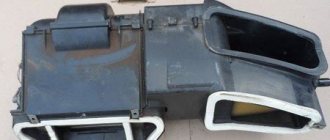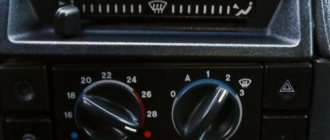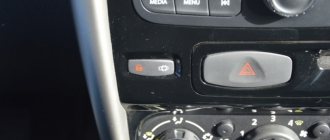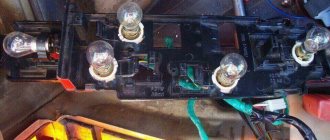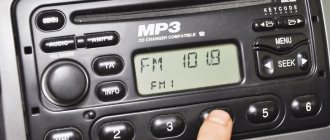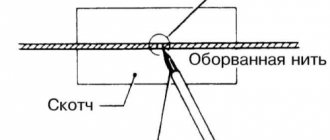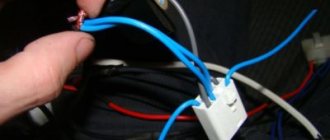On first-generation Nissan Qashqai cars, the J10 body produced in 2006, 2007, 2008, 2009, 2010, 2011, 2012 and 2013, as it turned out, has a number of problems with the interior air conditioning and heating system.
The culprit of all these problems is the fan - an electric motor that spins the impeller. Let's take a closer look at the reasons and the stove repair itself.
Problems and reasons
We have been hearing about stove malfunctions in this Qashqai for a long time. Three main symptoms of malfunction: the stove does not blow (does not heat), the stove does not change speed or makes strange sounds (whistles, squeals, squeaks).
The main culprits for these symptoms are:
1. The stove motor does not blow: the brushes are worn out/lamellas are worn out/the winding is burnt out - change the motor or the transistor is burnt out - change the transistor or the thermal fuse in the transistor block is burnt out - change the thermal fuse.
2. The stove motor does not change the rotation speed: the transistor has burned out - change the transistor.
3. The stove motor squeals: the bushings are worn out - change the motor. I don’t recommend changing bushings for bearings - there are a lot of difficulties, the result is not very good.
Selection and prices
There are plenty of options to choose from. In different stores the prices for the motor will be different and on average its cost is 3000 - 4000 rubles. You can buy it at car wrecking yards for half the price.
The motor is sold with the housing and impeller assembly. The Nissan Qashqai (J10) and X-Trail (T31) models have the same ones.
The original Qashqai heater motor has not one number, but five:
27225-ET00A, 27225-ET10A, 27225-ET10B, 27225-JD00A, 27225-ET00B
Original heater motor XTrail two numbers:
Moreover, all seven numbers are the same spare part!
If we have to make do with replacing the transistor, we purchase a new one for independent repairs or at the request of the technician. The following options are suitable:
IRFP064N - 55V, 98A - recommended for purchase. IRFP064NPFB - 55V, 98A - this is a modification, recommended for purchase. IRFP044 - 60V, 57A. IRFP054 - 60V, 70A - can be taken. IRFP048 - 60V, 70A - can be taken. IRFP250N - 200V, 30A - this one burned out in a day, the current is not enough.
The average price of a transistor is from 95 rubles. up to 200 rub.
Heater fan motor replacement services and cost. This procedure is quite labor-intensive and requires certain skills. Therefore, it is better to trust those people who have experience in such things. At service stations, the work will cost about 2,000 rubles, without the cost of a new engine.
If you wish, you can make the replacement yourself, but it will take much longer than it will take in the service department.
Stove fan diagram
To get to the unit we are interested in, we need to remove the pedal block and begin disassembling the heater housing from the cabin filter side. This procedure is quite labor-intensive and requires certain skills. Therefore, it is better to trust those people who have experience in such things.
Qashqai J10 Heating and Air Conditioning System
1. Intake pipe rubber bushing 2. Air conditioning motor assembly 3. Heater pipe seal 4. Air conditioning filter 5. Air conditioning filter cover 6 . Mixing damper motor (left) 7. Mixing flap lever 8. Electric heater 9. Mixing flap 10. Intake air temperature sensor.
A short excursion on how to remove the heater motor to replace it. The information is condensed and is well suited for amateurs and craftsmen.
- First we remove the dashboard.
- Next, remove the steering column beam.
- Then remove the heater and cooling unit.
- Remove the electrical wiring fastening clamp from the upper chamber of the intake flap.
- Then disconnect connector B from the damper motor.
- Next, from the heater housing and cooling unit, unscrew the mounting screws - A of the lower chamber of the intake damper.
- And remove the intake flap motor 1.
Then remove the air conditioner motor
The fan needs to be moved to the right and the mounting pin and elbow removed.
Replacing the Qashqai stove motor
The most frequently used component in any vehicle during cold weather is the heater. Without this device, driving a car will be less comfortable, so before the start of winter, the car owner is simply obliged to diagnose the health of the heater. If the system does not work, it can be caused by various problems, but the motor is usually the cause. In this article we will talk about how to replace the heater motor in a Nissan Qashqai or any other model.
Stove malfunctions
If the heater fan does not work in a Nissan Tiida, Qashqai, Beetle or any other car, then this problem needs to be solved as quickly as possible. After all, constant inoperability can lead to the fact that if the windows fog up, which happens quite often in winter, they will remain fogged up. Moreover, if it is frosty outside, the windows may also freeze, and the air temperature in the cabin will be generally low. We suggest you understand the main symptoms and causes of stove malfunctions.
Electric motor of the heater system of a Nissan car
Signs and causes
The three main symptoms of heater failure are:
- the system does not work, does not heat the air;
- The speed of the heater fan does not change, despite the adjustment;
- during operation, the heating system began to make sounds that were uncharacteristic of its operation, we are talking about creaks, whistles, squeals, etc.
If the motor only works at 4th speed, then the rotation speed resistor has burned out. As a rule, it is located next to the motor.
As practice shows, the main causes of such symptoms are as follows:
- If the heater does not work at all, this may be due to wear of brushes or lamellas, as well as burnout of the winding. In this case, you will need to replace the system's electric motor. If the problem lies in a burnt-out transistor, then it will also need to be replaced. In some cases, the reason lies in a failed thermal fuse, which is located in the resistor block, then you only have to change this element.
- If the fan does not change the rotation speed when adjusting this parameter from the passenger compartment, then most likely the problem lies in the transistor; this component will need to be replaced.
- The appearance of extraneous sounds, as a rule, indicates wear of the bushing. If this is the case, then you will need to change the heater motor. You can read reviews online about replacing bushings with bearings - we do not recommend doing this, since the replacement procedure as a whole is a painstaking task, and it is not a fact that the result will suit you (the author of the video is the channel Valery Deryugin).
Instructions for replacing the stove motor
The procedure for replacing a heating system motor is also not an easy task. But if you are used to repairing a car with your own hands, then it will not cause you any difficulties.
To replace the heater motor, follow these steps:
- First you need to dismantle the dashboard. To do this, disconnect all the necessary fasteners and unscrew the bolts on which the control panel is attached. Disconnect the device from all connectors and plugs and set it aside. All work on the control panel must be carried out carefully to prevent damage to this unit.
- When the instrument panel is removed, it is necessary to dismantle the steering column beam. You will need a standard plumbing tool for this.
- Having done this, you can dismantle the heating device itself, as well as the cooling unit. When removing, also be careful not to damage these system elements.
- After these steps, it is necessary to remove the electrical wiring retaining clip from the upper chamber of the intake flap. It should be noted that quite often problems in the operation of a particular mechanism are caused precisely by electrical circuit malfunctions. Therefore, when removing the wiring, be careful not to damage the circuit. If you see that the contacts in the plugs have begun to oxidize, then they must be cleaned immediately, this will avoid possible problems in the future. Use a construction brush to clean the contacts.
- Next, following the diagram, you need to disconnect the connector marked with the letter B from the damper motor. Having done this, you need to unscrew the mounting bolts A from the housing of the heating unit and the cooling unit using wrenches.
- After these steps, you can dismantle the intake flap motor, marked 1 in the diagram.
- Then you should remove the air conditioning system motor.
- The system venting device moves slightly to the right, after which you can remove the mounting pin along with the elbow. Having dismantled the stove motor, you need to connect a new device instead of the old one, fix and connect it. Mount the engine as securely as possible, this will prevent vibration and, accordingly, more accelerated wear and failure. After installation, further assembly is carried out in reverse order.
Stove repair
Well, now let’s look at the process in more detail, for those who found free time (3-4 hours) and decided to make the replacement themselves.
We remove the minus from the battery. Remove the left side panel of the center console (it has two latches), remove the lower part of the panel under the steering wheel. To do this, disconnect the cable to open. hood, unscrew the self-tapping screw with a T20 torx, and begin to gently release the latches; it is better to first crawl under the panel and determine their location.
Having disconnected the panel, disconnect the connectors from the left block of buttons (mirror control, chandelier, ESP...), unscrew the T20 torx from the climate sensor.
Next, we lie down on our back and climb to unscrew the two 10mm bolts. Without removing this piece of hardware, it will not be possible to remove the pedal assembly. (the place of emphasis is circled).
Remove the bracket and pull out the pin.
Disconnect the connectors from the brake pedal end switches and from the throttle sensor, unscrew the 4 13mm nuts and take out the pedal assembly. (place of emphasis is circled)
We open the cover and take out the cabin filter.
Here it’s time for someone to figure it out, either on their back or on their stomach, so we basically lie down and crawl to the right place with a flashlight.
It's getting closer
Here it is - the engine.
We remove the power connector from it, then squeeze the latch by touch and turn the entire motor counterclockwise.
There is enough dust in it.
Now you can install a new motor and assemble everything in reverse order or repair the old one. Let's look at it from all sides. Below is the ventilation/cooling location for the motor brush assembly.
Unscrew the top nut by 8 and completely remove the impeller from the motor.
We see the blockage. The upper bushing is completely covered in dust and debris. Dirt deposits on the inside of the impeller.
It's even worse on the lower motor hub.
Now the task is to clean everything until it shines. Let's check the condition of the brushes, since we've come this far.
The brushes on this motor have not yet worn out.
Now let's get to the bearing and check its condition by cleaning the bushing. Remove the lock and other washers. We bend the petals and take out the bushing.
We check the noise of the bearing, if it whistles or hums, we replace it with a new one. Bearings suitable for this motor: SNR 608ZZ or SNR 608EE
We bend the petals even more, and change the bearing and bend it back. We screw the impeller. We return the motor to the car and assemble it.
The noise is eliminated, the operating speed is excellent, the stove heats wonderfully!
This instruction was used: 62851
once.
For comfort during winter trips, the interior of the Nissan Qashqai, both 2008 and all subsequent models, is equipped with a stove. Its performance is ensured by a unit such as a heater motor, and control by a temperature sensor, which together with some other components form the interior heating system. A serviceable and high-quality heating stove allows you to stay in the car without any complaints about the microclimate.
Nissan Qashqai stove repair
The content of the article:
1. Modernization of the Nissan Qashqai stove
2. Operation of the electric pump of the Bosch Nissan Qashqai heater in automatic mode
3. Removal and repair of the Nissan Qashqai heater motor
4. Replacing the heater motor in Nissan Qashqai
Modernization of the Nissan Qashqai stove
To modernize the stove, we purchased 2 meters of rubber pipe, a part from the cooling system of the VAZ family and 2 clamps d 50, 2 d 30, as well as 1 LITER OF ANTIFREEZE. Next, we compress the pipe with the tools at hand and cut it, then insert our already sawed-off tee, put on the pipes, plug the original pipe with a bolt and clamp, tighten all the joints of the pipe and the tee with tomatoes, add antifreeze to the level and enjoy life and warmth. Now I’m waiting for frost to test the upgrade in weather conditions below 0. There is another option - buy a tee from UAZ, it doesn’t fit in diameter, saw it along the seam and weld it, it will be great (it’s in the photo)
Next, we welded the seam and replaced the old one with a modernized one (its diameter turned out to be 38 mm - it fit with difficulty)
You can clamp the pipes using 2 plates and large bolts and nuts
Operation of the electric pump for the Bosch Nissan Qashqai heater in automatic mode
From the previous owner I got a Bosch electric pump (Catalog number 0 392 020 034 or 0 392 020 024), installed in the engine compartment to pump coolant to or from the stove (it makes no difference, the main thing is to create a forced flow of coolant).
Electric pump Bosch
True, the food was collected somehow ugly...
Power supply for the pump, collected by the previous owner. The control plus, as I understand it, was taken from the mass air flow sensor... This seems wrong to me: the sensor must work accurately, and only he knows what errors in operation this pump gives to the sensor.
I found a thread with an idea about a system for automatically turning on the pump when the stove is set to HI mode. It all comes down to the fact that in this mode, the heater plug gear (in the area of the cabin air filter), going down, clamps the contacts of the microswitch, closing the circuit. In this case, the “plus” from the cigarette lighter is supplied to the pump.
First it was necessary to make fasteners for the microphone.
Something like this should have been done
Hole sizes
I printed out a 1:1 scale model of the mount, cut it out, and tried it on on site. By the way, if anyone wants to repeat this procedure, you can, without changing anything in it, print and cut it out. The size is correct there.
Next, I traced the cut-out template on the metal part of the old CD-rom case and cut it out with metal scissors.
Blank, still without holes, and the remains of a CD-rom cover
Assembled
Well, then everything is simple. To begin with, I disassembled all the old wiring, which, as it turned out, was de-energized, and last winter I drove with a non-working pump. Next I got to the “plus” from the cigarette lighter:
Crashed into the cigarette lighter power supply...
...and stretched it to the microphone
I pulled the wire (red) through the rubber membrane between the passenger compartment and the engine compartment. In order to stretch the wire, I used solid steel wire. As a result, there was no need to perforate the membrane: the wire passes through the original technological hole, like all other wires. At the same time, I connected a second (white) wire, for the future, to install a button for forced headlight washing (not through pressing the windshield washer five times).
Cigarette lighter wiring
I connected everything and checked: it works, you can isolate and hide it
Before test run
Final version
As a result, everything is assembled and working. The pump heats up noticeably hotter and earlier. In general, I'm pleased.
Removal and repair of the Nissan Qashqai heater motor
Quite unexpectedly, when I turned on the ignition, I heard a grinding noise coming from under the torpedo. When the fan was turned off, the sound disappeared. Conclusion - the electric motor of the stove is to blame. The cheapest motor costs around 7,000 rubles. It was decided to lubricate the bushings of the old motor and start putting them aside for the new one, because... You don’t know how long the old one will last.
unscrew the 2 bolts of the plate securing the cables of the tank cover and hood
removed
remove the side plastic part (it is on clips)
we shoot the same thing from above
side and top removed
remove the electric drive
we need to unscrew the 4 mounting nuts for 13 and 2 bolts for 10, which are located at the top. Attention: for this operation, a long head of 13 will help us a lot!
After all the nuts securing the pedal assembly have been unscrewed. Disconnect the 2 connectors from the brake pedal. Do not disconnect the connector from the gas pedal under any circumstances! Let the gas pedal hang on a wire)
It is very inconvenient to get to it. But nevertheless, the motor cover looks exactly like this. We unscrew the fastening bolt (it’s good that there is only one there). Disconnect the connector from the motor. Turn the lid counterclockwise and pull it towards you.
This is what the heater motor looks like when removed
rear part with impeller
Using a size 8 wrench, remove the fastening nut and pull out the impeller
as you can see, a fair amount of dust and dirt has accumulated in it
The bushing is located behind the rings at the very bottom of the shaft. We remove everything in order: retaining ring - washer - soft gasket - 3 other gaskets
This is what all the rings and washers look like in sequential order
This is what the heater motor bushing looks like. My production was small
There were a lot of questions - what to lubricate? As a result, I lubricated the bushing with Tsiatim 201, and the soft ring on the shaft with regular machine oil (it wouldn’t hurt). We perform the same operation with the other bushing, which is located at the other end of the shaft
we collect everything in reverse order
Finally, I decided to check the condition of the commutator brushes. Mine are not too worn out yet
I collected everything and put it back - the nasty sound disappeared. I've driven 1000 km so far. Everything is quiet. If the sound appears again, then I’ll take a new one.
Replacing the heater motor in a Nissan Qashqai
Today my post will be dedicated to the stove fan. About a year and a half ago I was faced with the problem of a non-working stove.
At first the fan began to whistle, then make noise and scrape when driving over bumps, and at one point it stopped showing signs of life.
After removing the motor, severe wear on the bushings and a burnt-out thermal fuse of the control unit were visible.
Because There was no money for a new motor; the bushings were replaced with ball bearings. The fan worked after that, but the downside of this modification was the extraneous noise of rolling and noisy balls.
Quite recently, a new motor from the X-trail T30 was purchased on Aliexpress. Number 27225-8H31C. Upon arrival to me, it was installed. The work took ~2.5 hours. To remove the motor (it is located on the driver's side behind the cabin filter), you need to remove: 1. Plastic panels 2. Heater damper control units 3. Pedal assembly.
And then, using obscenities and in a crooked position, pull out the stove fan. Next, the impeller is removed, the motor is removed from the housing and a new motor is installed in the reverse order. Before installation, I lubricated the axle with graphite lubricant, so as not to climb there for longer.
Well, and most importantly, why did I bother for so long? After assembly, I found out that this motor rotates in the wrong direction.
WHEN INSTALLING THIS FAN, YOU MUST REPLACE THE WIRES IN THE BLOCK!
Now the machine is quiet and has good airflow.
https://www.drive2.ru/l/4932009/, https://www.drive2.ru/l/3988060/, https://www.drive2.ru/l/8870705/, https://www .drive2.ru/l/8271002/
next article:
DIY Nissan Qashqai interior cleaning
Contents of the article: 1. Cleaning the Nissan Qashqai interior with interior disassembly 2. Cleaning the fabric interior of the Nissan Qashqai 3. Cleaning the upholstery
Rating 0.00 [0 Vote(s)]
Main malfunctions and their causes
There are three main problems on the Nissan Qashqai that cause the heater to not work properly (it doesn’t heat or blow):
Typically, the heater motor for Nissan Qashqai 2009 and other years of production is equipped with a housing and an impeller and is supplied assembled.
Replacing the Qashqai heater fan
Problems with the heater fan on the Nissan Qashqai, which lead to replacement, are accompanied by the following symptoms:
- The fan speed does not change;
- no air flow when turned on;
- the operation of the rotating element is accompanied by extraneous sounds (grinding, whistling, creaking, and so on).
At the same time, there may be many reasons why the heater fan does not work in a Nissan Qashqai. Among them:
- bushing wear;
- a burnt-out transistor or its heat-resistant fuse;
- short circuit in the motor winding;
- mechanical wear of the brush-contact apparatus.
Tools
To replace the Qashqai interior heating fan, you will need to prepare the following tools:
- Phillips screwdriver and flat blade;
- pliers;
- socket heads for 10 and 13, standard and with an extended tube;
- ratchet with extensions.
It is also recommended to take care of preparing good lighting, since the work will be carried out in the lower part of the center console. A portable light bulb with a protective housing is best for this. If you don't have one, you can use a flashlight.
Step-by-step description of replacing the heater motor
When the Nissan Qashqai heater does not work, you have to make a choice between fixing the problem yourself and using the services of car services. Replacing a Qashqai stove fan does not require experience, but is accompanied by inconvenience that arises due to lack of freedom of movement. It is recommended to start the process of replacing the heating system motor by moving the driver's seat to the rearmost position and raising the steering wheel to the highest level. Next, we adhere to the following sequence of actions:
Will be useful: Mechanical engine supercharger
- The lower plastic casing under the steering column is dismantled. It is secured with two ten-point bolts, which are located on the hood and gas tank opening levers;
- With a sharp downward movement, the casing is removed from the seat. After this, you need to disconnect the power cables of the OBD connector and the climate control sensor;
- The air pipe for blowing the legs is dismantled. It is secured with a clip and a ten-point bolt;
- At this stage, you will need to remove the pedal assembly, after first disconnecting the three power terminals. To disconnect the brake pedal from the master cylinder, remove the cotter pin and pin. In order to remove your finger, you need to clamp the white cap with pliers;
- At the top of the pedal assembly, a bar is detached and held in place by two cotter pins;
- All that remains is to unscrew the six fixing bolts and remove the pedal assembly. This will allow access to the stove fan;
- To dismantle the old element, you will need to unscrew one bolt, disconnect the power connector and remove the motor by turning the housing counterclockwise;
- In the future, all that remains is to install a new heating system fan and perform the assembly in the reverse order.
Repair
In most cases, if the heating and air conditioning system is not functioning well, it may be necessary to replace the heater fan or some resistor (they are located in the additional unit); in some cases, it may be necessary to replace the radiator of the heating system.
Very often there are situations when the stove heats up, but the fan does not work; in this case, you should pay attention to the serviceability of the fuse, which can be found in the cabin unit (number five).
Remove the non-functioning element, and before installing a new one, be sure to check the serviceability of the circuit. Usually after this the fan works again.
How to remove the heater motor, repair or replace it, can be seen in numerous videos presented on the Internet, each of them was filmed by a person who personally carried out the repair work.
In order to replace the motor, you must follow the following sequence:
- The first step is to remove the instrument panel, as well as the steering column beam.
- The cooling unit and heater should be set.
- Remove the electrical wiring fastening from the intake flap (its upper chamber).
- Disconnect the connector from the engine.
- Remove the mounting screws from the heater housing and cooling unit.
- Remove the air conditioner motor.
How to Remove the Heater Motor on a Nissan Qashqai
Content
Nissan oatmeal
oven does not work For comfort during winter travel in the Nissan Qashqai
Both 2008 and all subsequent models have an oven.
Its performance is ensured by an assembly such as motor and control. This is a temperature sensor that, together with several other components, forms the cabin heating system. The stove works and heats perfectly, allowing you to stay in the car without any complaints about the local climate.
Main malfunctions and their causes
For Nissan Qashqai
There are three main problems that lead to oven malfunction (it does not heat, does not blow):
- The furnace motor did not blow. The problem can be considered in such a section that the transistor or fuse will burn out and, as a result, to correct the situation, the broken element must be replaced. Also, the cause of such a breakdown will be worn strips and brushes for the next burnout of the winding.
- When the oven is running, the rotation speed (rpm) changes do not change even when turning the knob for this parameter. Of course, this indicates that the transistor has burnt out and needs to be replaced to correct the situation.
- Changing the motor plate will be necessary if extraneous sounds are heard in the passage during operation. This appears to indicate wear and tear on the bushes, which is difficult to change on your own.
READ Replacement Stabilizer Link Opel Zafira
Usually the heater motor is on Nissan
Qashqai 2009 and other production years are equipped with a casing and impeller and are supplied.
How to remove the heater motor of a Nissan Qashqai (Nissan Qashqai)?
A short note to delete. My Instagram:
Removing the Qashqai oven engine
Nissan here
/ 480157278679335029 / logbook /
Repair
Almost always, if the heating and air conditioning system is not working properly, it may be necessary to replace the heater fan with some kind of resistor (they are in the additional unit), sometimes the radiator of the heating complex is necessary to account for the programs.
Situations often arise when the stove heats up, but the fan does not work; in this case, pay attention to the safety of the fuse, which you will always find in the cabin (number 5).
Please remove the empty item before installing a new one, be sure to check the good chain. This usually results in the fan starting again.
How to remove the engine
Heater, get it repaired for another shift, watch countless videos online, each filmed by someone who has personally performed the repair work.
READ Replacing Lanos Heater Radiator Video
To change the engine, you must follow the following sequence:
- You should take off The control panel also supports column controls.
- Install the cooling unit and heater.
- Remove the wiring harness from the intake valve (its upper chamber).
- Disconnect the connector from the engine.
- Loosen the heater housing and cooling unit mounting screws.
- Take off the engine air conditioning unit.
Then move the fan to the right and remove the mounting pin and elbow. They then change the motor or other heating system components if desired, allowing for accounting (software).
Conclusion
Source
Stove malfunctions
If the heater fan does not work in a Nissan Tiida, Qashqai, Beetle or any other car, then this problem needs to be solved as quickly as possible. After all, constant inoperability can lead to the fact that if the windows fog up, which happens quite often in winter, they will remain fogged up. Moreover, if it is frosty outside, the windows may also freeze, and the air temperature in the cabin will be generally low. We suggest you understand the main symptoms and causes of stove malfunctions.
Electric motor of the heater system of a Nissan car
Signs and causes
The three main symptoms of heater failure are:
- the system does not work, does not heat the air;
- The speed of the heater fan does not change, despite the adjustment;
- during operation, the heating system began to make sounds that were uncharacteristic of its operation, we are talking about creaks, whistles, squeals, etc.
If the motor only works at 4th speed, then the rotation speed resistor has burned out. As a rule, it is located next to the motor.
As practice shows, the main causes of such symptoms are as follows:
- If the heater does not work at all, this may be due to wear of brushes or lamellas, as well as burnout of the winding. In this case, you will need to replace the system's electric motor. If the problem lies in a burnt-out transistor, then it will also need to be replaced. In some cases, the reason lies in a failed thermal fuse, which is located in the resistor block, then you only have to change this element.
- If the fan does not change the rotation speed when adjusting this parameter from the passenger compartment, then most likely the problem lies in the transistor; this component will need to be replaced.
- The appearance of extraneous sounds, as a rule, indicates wear of the bushing. If this is the case, then you will need to change the heater motor. You can read reviews online about replacing bushings with bearings - we do not recommend doing this, since the replacement procedure as a whole is a painstaking task, and it is not a fact that the result will suit you (the author of the video is the channel Valery Deryugin).
Replacing the stove motor
The Achilles heel of the first generation Nissan Qashqai is the heater motor. The main problems that arise with it:
- Brushes and lamellas quickly wear out, and the winding burns. In this case, the stove stops “blowing”. If this is the problem, you can try to repair the motor.
- Failure of the transistors leads to the fact that the speed of the motor is not regulated. In this case, the transistors have to be changed.
- An extraneous hum or creaking noise during operation of the stove warns of an imminent replacement of the motor. The bushing wears out quite quickly, which causes suspicious sounds. Many people try to replace it with a bearing, but this is not the best idea: it will take a lot of time, and the result will still not be quiet operation.
Low flow rate or rapid loss of coolant may be associated not with the stove itself, but with the radiator or pipes. Before disassembling the stove, it is necessary to check the integrity of these elements. It may be necessary not to repair the electric motor, but to replace the heater radiator or broken hoses.
A clogged cabin filter may also be the culprit for poor heating of the cabin; before buying new parts for the stove, it is recommended to first replace the filter. Perhaps this will completely solve the problem.
Replacing a Nissan Qashqai heater motor is not the easiest procedure, so most Qashqai owners prefer to go to a service station, despite how much quality costs. The average cost of work will be 2000 rubles, to which the cost of the motor is added - 4000-6000 rubles. If you need to replace the transistor, you can buy a new one for 100-200 rubles.
If new spare parts are available, replacing the stove motor by professionals will take 3-4 hours. self-repair with skillful hands with all the necessary tools - twice as much. If you have never had to do this kind of work before, but you have a tool, a broken stove and a desire to fix it, you will have to spend at least two days on the problem. But next time it will definitely be faster and easier.
A motor for a stove is a spare part that is better to buy new rather than used, and you won’t have to look for it for a long time. The fact is that the motors on the Nissan Qashqai and X-Trail are absolutely identical.
Numbers of the original heater motor for Nissan Qashqai:
Numbers of the original heater motor for Nissan X-Trail:
You can safely buy a motor with any of these numbers; it will be suitable for replacement.
How to change a stove motor with your own hands
Before you replace or repair the motor, you need to make sure that the problem is not a blown fuse.
List of tools required to replace a heater motor with your own hands:
- ratchet with extension;
- a T20 Torx screwdriver for it;
- heads for 10 and 13 or wrenches of the same size (but more convenient than heads);
- pliers;
- flat and Phillips screwdrivers;
- clip removers
Step-by-step work process:
- The car is de-energized (first the negative terminal is removed, then the positive terminal).
- The cable for opening the hood is disconnected.
- The following are removed sequentially: the left side part of the dashboard and the lower part of the panel under the steering wheel - all with rivets, the location of which is best determined in advance.
- The climate sensors and the connector from the left button block are disconnected.
- We find the upper chamber of the intake damper and remove the clamp from it that secures the wiring.
- The pedal assembly is removed (before this, the connector is removed from the brake and gas pedal ends).
- After this, the cabin filter housing snaps off.
- The power connector is disconnected from the motor, which is turned counterclockwise and removed.
After the motor is removed, it must be cleaned of debris and dirt and the winding and brushes inspected. If it is impossible to restore the functionality of the old heater motor, the new one is installed in the same place in the reverse order.
The heater fan is replaced after the electric motor is disconnected, removed and cleaned.
Replacing the heater fan
Constant fan speed, unusual squeaks and lack of air flow after turning on the heating may indicate problems with the fan. This does not necessarily mean that the furnace fan will need to be replaced unless the physical integrity is compromised.
The heater motor for Nissan Qashqai is sold complete with impeller and housing. In a Nissan Qashqai, replacing the heater fan is possible, but not rational - if the impeller is damaged or even slightly bent, the heater will make a strong noise and will fail quite quickly, and it is almost impossible to carry out balancing on your own.
The breakdown may concern a transistor in the speed controller or an overheated resistor - if it burns out, it is replaced with a new one.
Numbers of suitable transistors:
- IRFP250N – low quality;
- IRFP064N – high quality;
- IRFP048 – medium quality;
- IRFP064NPFB – high quality;
- IRFP054 – medium quality;
- IRFP044 – medium quality.
Instructions for replacing the stove motor
The procedure for replacing a heating system motor is also not an easy task. But if you are used to repairing a car with your own hands, then it will not cause you any difficulties.
To replace the heater motor, follow these steps:
- First you need to dismantle the dashboard. To do this, disconnect all the necessary fasteners and unscrew the bolts on which the control panel is attached. Disconnect the device from all connectors and plugs and set it aside. All work on the control panel must be carried out carefully to prevent damage to this unit.
- When the instrument panel is removed, it is necessary to dismantle the steering column beam. You will need a standard plumbing tool for this.
- Having done this, you can dismantle the heating device itself, as well as the cooling unit. When removing, also be careful not to damage these system elements.
- After these steps, it is necessary to remove the electrical wiring retaining clip from the upper chamber of the intake flap. It should be noted that quite often problems in the operation of a particular mechanism are caused precisely by electrical circuit malfunctions. Therefore, when removing the wiring, be careful not to damage the circuit. If you see that the contacts in the plugs have begun to oxidize, then they must be cleaned immediately, this will avoid possible problems in the future. Use a construction brush to clean the contacts.
- Next, following the diagram, you need to disconnect the connector marked with the letter B from the damper motor. Having done this, you need to unscrew the mounting bolts A from the housing of the heating unit and the cooling unit using wrenches.
- After these steps, you can dismantle the intake flap motor, marked 1 in the diagram.
- Then you should remove the air conditioning system motor.
- The system venting device moves slightly to the right, after which you can remove the mounting pin along with the elbow. Having dismantled the stove motor, you need to connect a new device instead of the old one, fix and connect it. Mount the engine as securely as possible, this will prevent vibration and, accordingly, more accelerated wear and failure. After installation, further assembly is carried out in reverse order.
Replacing the Nissan Qashqai heater motor
A small but quite cozy crossover from Nissan has gained considerable popularity in Russia, and this is justified. Compact in appearance, the car has considerable spaciousness, allowing you to fit comfortably into the cabin. An additional advantage can be considered low fuel consumption - in this Qashqai can be compared to a hatchback.
The first generation Nissan Qashqai J10 has been produced since 2006. In 2010, a restyling was carried out, after which the interior was significantly changed, several new engine and gearbox options were added.
Low fuel consumption is beneficial and pleasant, if you do not take into account the impact of such savings on interior heating. In the 2008 Nissan Qashqai, coolant takes heat from the engine and uses it to heat the air, which is sent inside the car. But if the engine operates with a certain fuel starvation, then its operating temperature is low, and therefore it is not able to fully warm up the car.
Price issue
And although the procedure for replacing a heating system motor is not particularly complicated, not every motorist can cope with such a task. Therefore, many vehicle owners have to pay for such a service. If you decide to seek help from a service station, then you will probably be interested in learning about the cost of the service. Depending on the region of residence, it may differ radically. For example, if in Moscow you pay from 4,500 to 6,500 rubles to replace a motor, then somewhere in Rostov or Nizhny Novgorod this procedure will cost from 1 to 4 thousand rubles.
